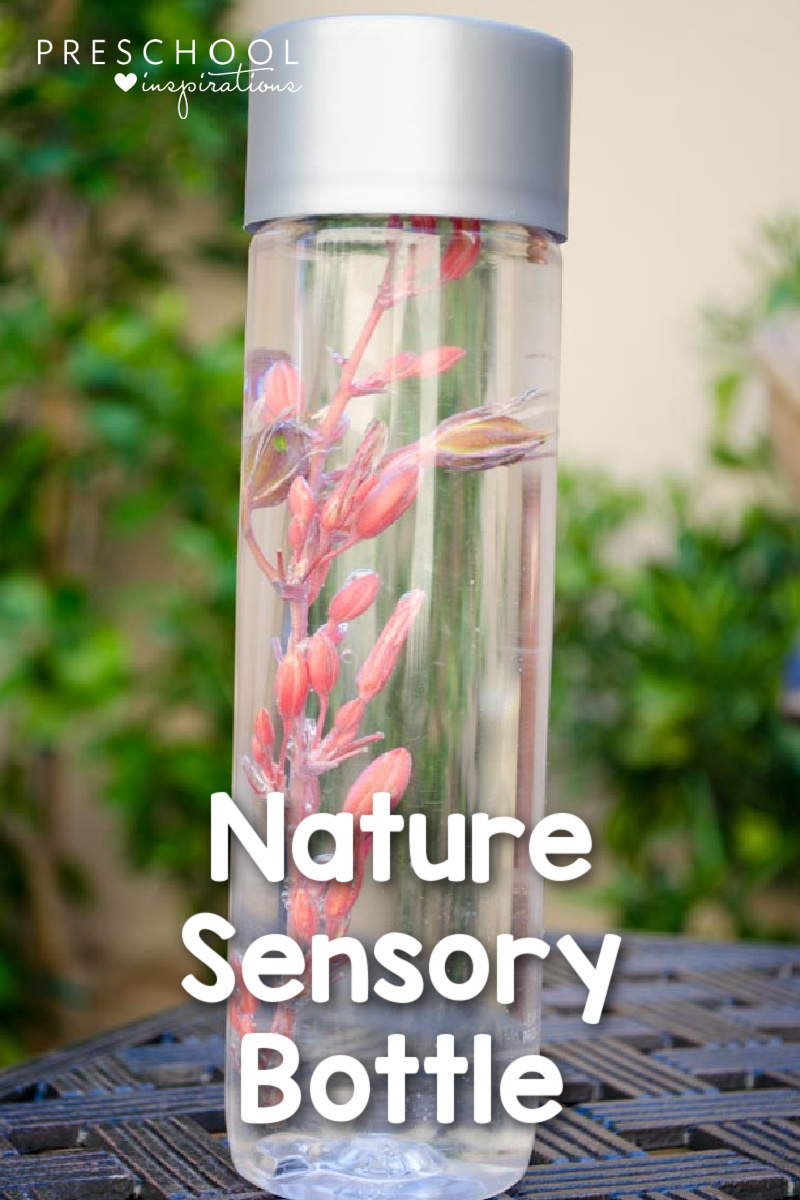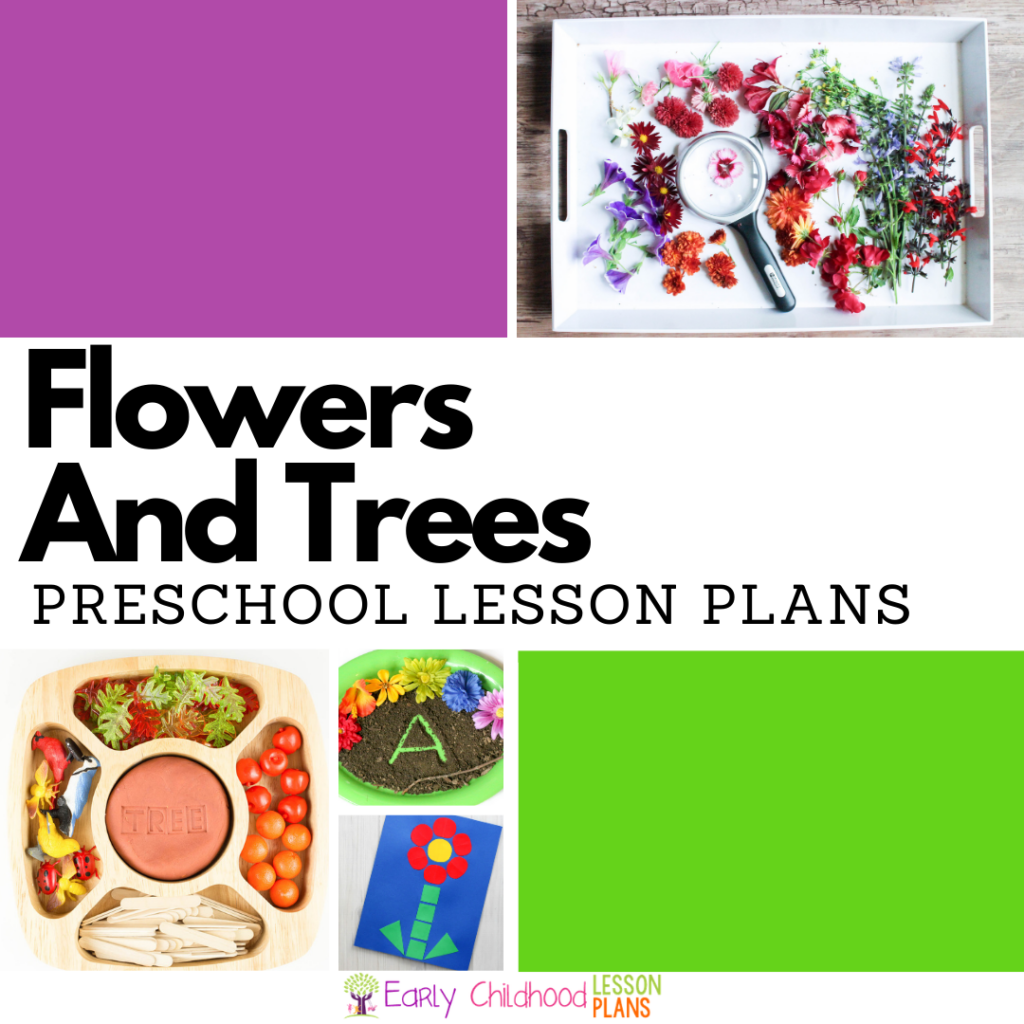I’m a bit of a sensory bottle addict, and right now I can’t get enough of this beautiful spring sensory bottle! It’s incredibly versatile and easy to make. If sensory bottles are new to you, check out my top tips for how to make a perfect sensory bottle.

Related: Spring Preschool Themes
One of my favorite places to visit is Arizona. The palm trees, cactuses, yuccas, oleanders and other unique plants are all a sight I can’t wait to see. This last time I visited I decided to put a desert flower into a sensory bottle. I found a beautiful blooming yucca, and my kids and I decided it would work perfectly as a spring sensory bottle.
It is a great way to explore a beautiful plant in a new light. It looked artsy even.

Related: Spring Songs for Kids
Spring Sensory Bottle
Materials for a Spring Sensory Bottle
- Voss Plastic Water Bottle
- Water
- Yucca Plant
And that’s it!! Like I said, it’s an incredibly easy and versatile discovery bottle!
We used a 16.9 fl. oz. VOSS plastic water bottle. These are my absolute favorite bottles to use for sensory bottles! Unfortunately, they can be hard to find. I kept being disappointed after I’d drive to a story to get some, only to find that they didn’t have them, or that they only had the glass and not the plastic ones. Now I’ve given up getting them anywhere else and just buy them off Amazon!
Considerations for your Nature Sensory Bottle
We chose a yucca plant for our bottle, but you could use almost any plant that you and your little ones find in nature! Any spring flower would make a gorgeous spring sensory bottle.

However, there are many plants in Arizona (and many other parts of the world) that are toxic. Our yucca is not poisonous to humans, although it is for animals. It is important for me to teach the children to be careful with plants, especially our littlest who is a toddler. Toddlers happen to have a reputation for putting items in their mouths, and our little sister is no exception.
We have a greenhouse in our backyard, so the children are used to picking and eating from it. It can be confusing for children to understand the difference between edible plants and poisonous plants, but it is important to help them through the process and to educate ourselves about plants.
If you are looking for more resources about which plants are poisonous, you can find a list of poisonous plants here.

Our spring sensory bottle lasted for several days before it started losing color and fading. If you use water like I did, you won’t want to leave the bottle together for much longer than that. It will start to rust if you use a metal bottle!
But the short-lived nature of the bottle was ok! Now we are on the lookout for even more amazing flowers and plants that might be a perfect fit for our next sensory bottle.
More Nature Resources
Placing the yucca in a sensory bottle was a perfect way to explore it. I got the idea to place a piece of nature into a discovery bottle from the book, A Little Bit of Dirt: 55+ Science and Art Activities to Reconnect Children with Nature. In the book, there are so many beautiful and creative ways to make art out of nature. The one that caught my eye first was putting plants into sensory bottles.
You can see the gorgeous idea on the cover. I also love the idea for blowing dandelion bubbles and making drums during a gentle rain!
Done-For-You Preschool Spring Resources
Spend less time lesson planning with done-for-you lesson plans and unit studies! Click on the image below to learn more about each preschool lesson plan. These pair perfectly with a spring sensory bottle!
Check out some more amazing spring sensory bottles!
Vegetable Garden Discovery Bottle | Sunny Day Family
How to Make an Earthy Explorations Soil Discovery Bottle | One Time Through
Simple Spring Nature Sensory Bottles | Lemon Lime Adventures
Sea Shells Sensory Bottle | Rhythms of Play
Calming Nature Sensory Bottle | The OT Toolbox
Citrus Themed Nature Discovery Bottle | Where Imagination Grows

- Rainbow Sensory Bottle - March 3, 2024
- Teaching Neurodivergent Children in Early Childhood Education - January 8, 2024
- Creating Musical Memories: Teaching Music in Preschool - October 6, 2023



Leave a Reply